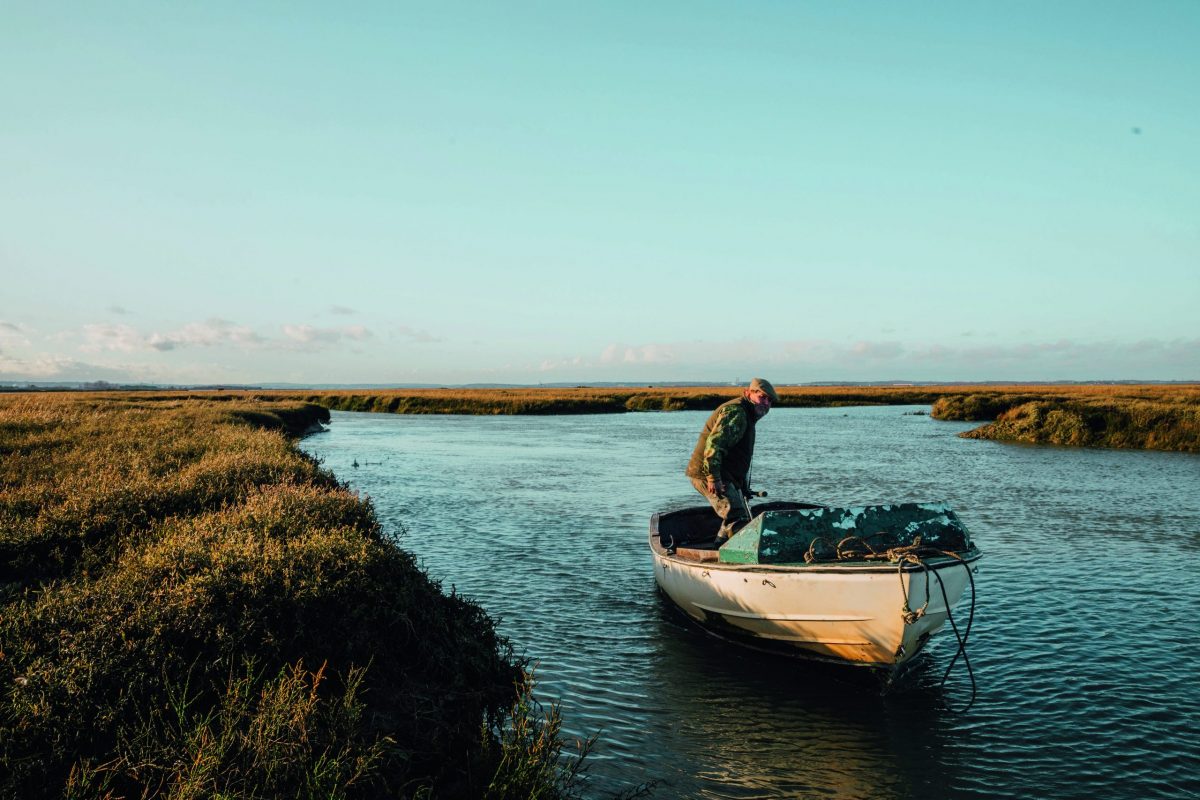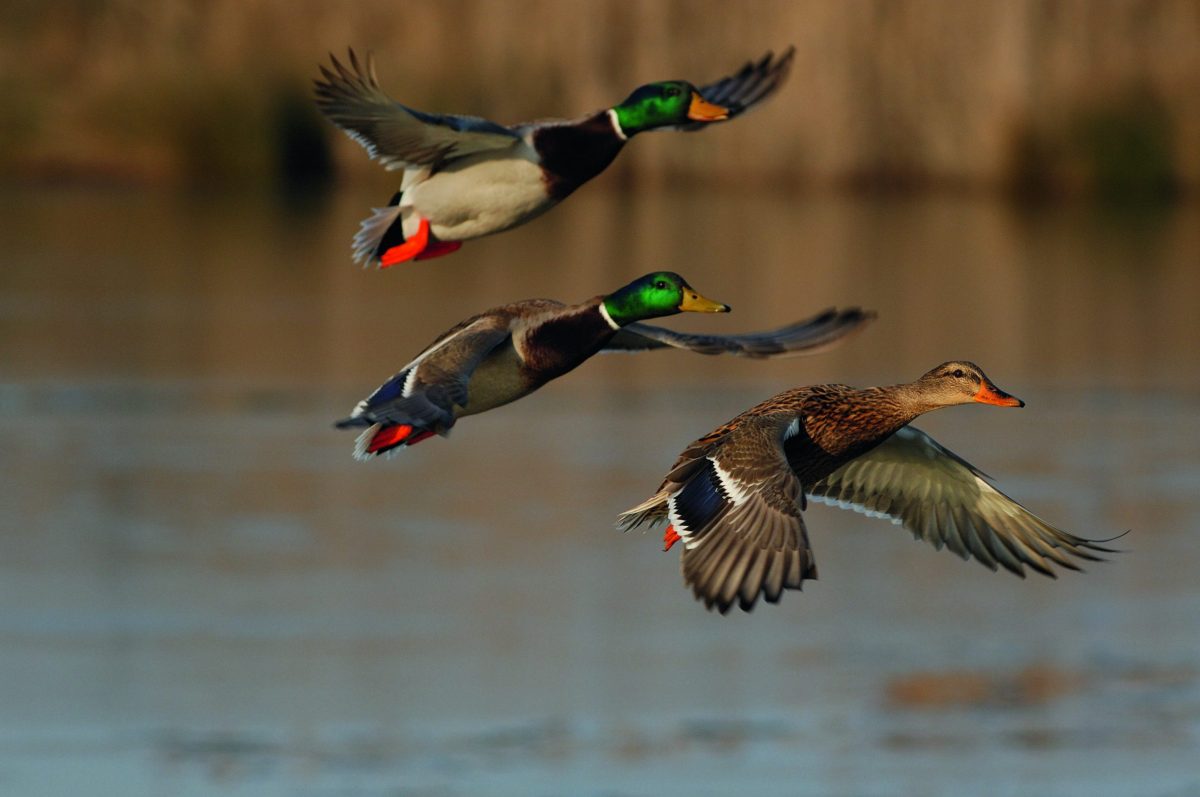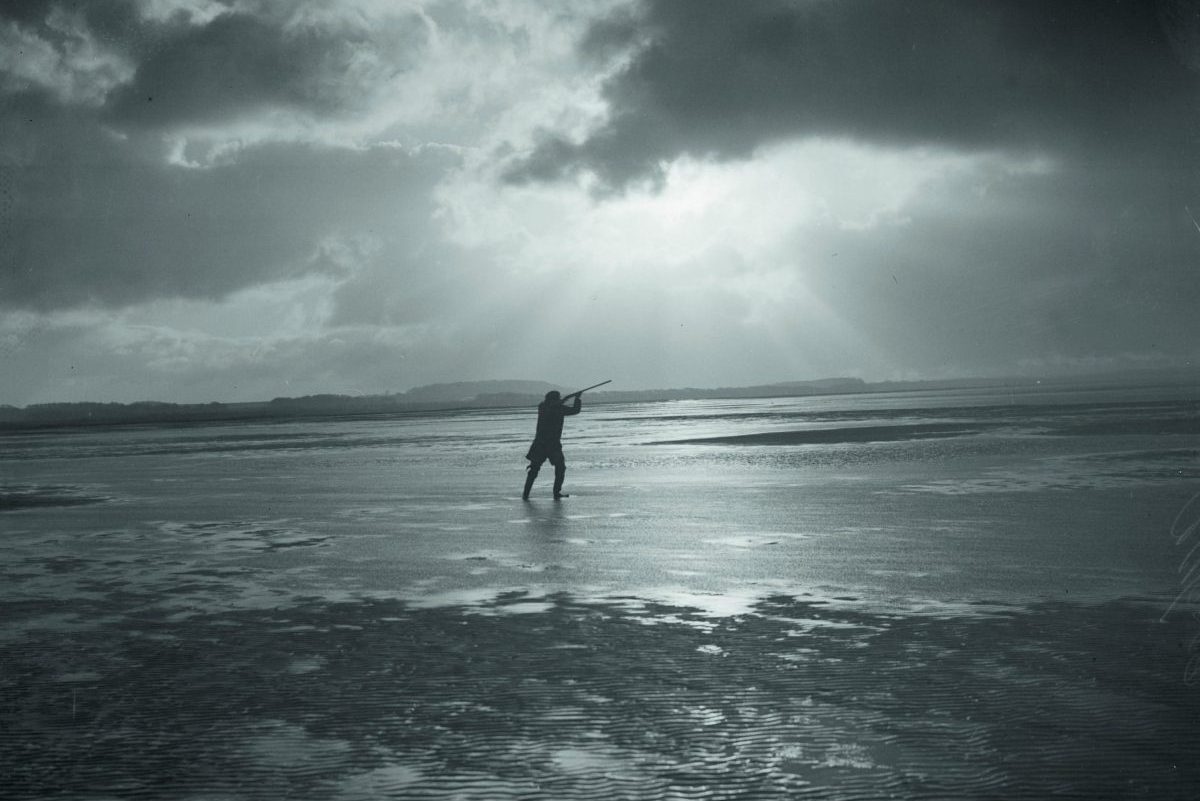Sink box hunting in Lake Saint Pierre, Quebec, Canada
Sink box hunting dates back to the 1800s and is so dangerous it's outlawed in the US. Jonathan Green throws caution to the wind in Canada.
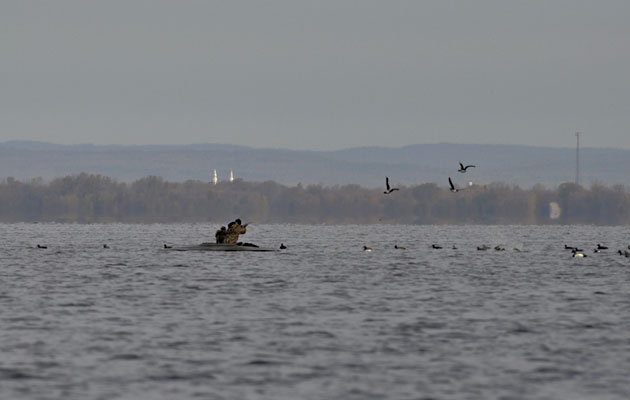
Another blast of icy water from a churning five-foot whitecap wave sluices over the side of the steel coffin-like structure, cascading over my head before racing down my spine. The protesting metal creaks and moans. The horizon is filled with angry clouds as rain blasts at a 45-degree angle. But now, out of the eye of the barracking storm wings a lone black duck tossed and flipped by the howling wind. He scuds across the wave crests, wrestling his flight controls like a pilot screaming mayday, as my barrel describes lazy circles trying to get a bead. I’m so low in the water he can’t see me. I try to steady in the heaving swell but there’s a boom as another wave blasts the side of the steel and showers me in greenish water. I loose two woefully unsteady rounds and the duck jinks and breaks west, unscathed. Another bump as a wave hits us as I try to reload. I drop a shotgun shell into the sloshing water at my feet only to see that my watery coffin is filling fast.
This metal box can’t sink
For the second time in two days I’m submerged, eyes just six inches above the water line of Lake Saint Pierre in Quebec, part of the 370-mile long St. Lawrence Seaway, as vast oil tankers slide past throwing up wake as they head out to the Atlantic. I sit in a sink box – part motorless submarine, part duck blind – which is a device that allows a hunter to sit so low in the water as to be virtually undetectable from above. The sink box is a large oblong apron, 8ft by 12ft, which has at its centre a 42″ deep box with a metal bench, which is 48″ wide and 24″ deep. We are here with Marcel, a diminutive, capable man who finds humour in almost everything. His father, a local welder, constructed the device. Marcel has hunted out of his father’s sink boxes on this lake since he was 11, a demonstration of the trust his father had in his creations. On our first day Marcel told me in his thick-French Quebec accent when I questioned the safety of what we were doing: “Even if the box fills with water,” he chuckled, “it won’t sink.” Today though, we’re out in a mighty storm and I’m replaying Marcel’s words, hoping they are not bravado.

The author and his guide on their way to experience the adrenaline-fuelled delights of sink box hunting.
Marcel shares a surname with the lake that dominates his life and that of his ancestors. “I love the water,” he told me when we did a marsh hunt the previous night and he vaulted over the side of the boat and raced to retrieve the birds ahead of his dog. “For me hunting in a field is like hunting in a desert.”
Cheek by jowl next to me is my long-time hunting buddy, Scott Wisniewski, an obsessive waterfowler who has hunted everywhere from Alaska in minus-30 temperatures to white-outs three miles offshore on Lake Michigan, near his Wisconsin home. We’re freezing cold and seemingly in danger of heading to Davy Jones’ locker but Scott’s incandescent with enthusiasm. “Oh man,” he chatters, teeth clinking like ice cubes in a bourbon on the rocks, as the waves blast over us. “This is fantastic. My biggest waterfowling ambition right here!” Glumly, I notice we are several inches lower in the water than when we started.
History of the sink box
There’s a renegade history and appeal to sink box hunting. The first boxes were constructed by market hunters on the Atlantic flyways in the 1800s. The boxes offered deadly submersive camouflage for redhead and blackhead ducks. On November 1, 1893, the opening day of the season on the flats of the Susquehanna river near Havre de Grace, Maryland, 5,000 birds were killed by sink box hunters, according to Harry Walsh in The Outlaw Gunner. One sink box hunter shot 235 birds. But, as we were discovering, a wind above 15 knots can swamp a gunner with icy water. For those who hunted for a living it was hardy and punishing work. In North Carolina’s outer banks, scores of commercial sink boxes dotted the sounds to growing controversy. “It is nothing more than an anchored box or coffin with hinged flats to keep the water from invading it,” wrote Ferdinand C. Latrobe in the Maryland Conservationist. “It is a wholesale murdering sort of thing and has little ‘sport’ about it.”
As waterfowl populations were wiped out, sink boxes were first banned in New York in 1839. This spawned an underground industry where hunters wore masks and, it was rumoured, shot anyone who informed on them. Eventually Maryland banned their use in 1935. In fact the last two sink boxes on Ocracoke Island in North Carolina were used to bury two English seamen found drowned on the seashore. In the US the tradition of sink box hunting has been buried with them.
For what we’re doing now – in Maryland for example – we’d get hit with a $250 fine, followed by a $1,500 fine for the second offence and, third time or any more beyond that: $4,000 and a stint in jail.
North of the border in Canada, however, sink box hunting has been a legal tradition for at least two centuries. And Marcel hosts hunters who come from all over the world.
Sink box hunting is weirdly addictive
On my first day I shot a goldeneye at about 15 yards out, which had flown straight down the pipe before realising his error. But, in one of the most extraordinary moments I’ve had waterfowling, a blue bill came in and circled our sink box three times, dodging our barrage and raising a middle finger to us. “Out of range,” I mused, unconvincingly.
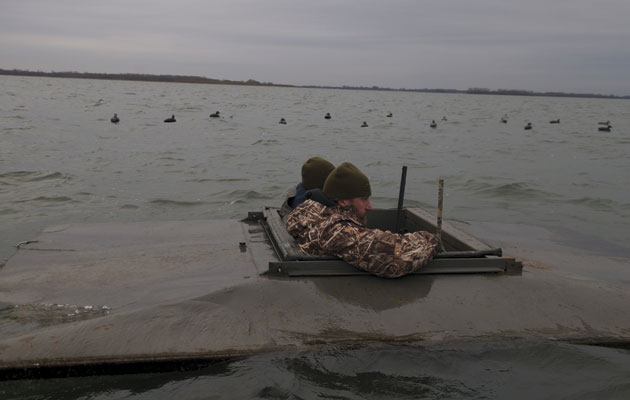
Hunters share the cosy space below the water line, unless the box fills with water, in which case it’s time to evacuate.
In the violent swell of our final day, I switched out of the sink box after my missed shot to let hunting partner Craig Wagner, Scott’s brother-in-law, take a turn. Marcel roared in on his boat as I clambered aboard. The storm increased in intensity, as Marcel, his waterproofs turned slick like a seal’s pelt in the driving rain, made a point.
“I think they should legalise sink box hunting again in the US,” he shouted over the wind. “With legal limits, what difference does it make?”
Suddenly, though, beyond the chop I make out Craig and Scott, standing in the sink box, waving their arms. Marcel accelerates towards them as I trip backwards and somersault head over heels into the decoy box. I land on my back. Mercifully, I didn’t have my loaded shotgun in my arms. I struggle out, fighting to regain balance on the boat as I hurriedly unload my shotgun, the boat hurled around like a cork in a washing machine. We reach the sink box, which is totally full of water and almost entirely obscured by waves, and the guys are standing in thigh-deep water. Scott clambers aboard followed by Craig. With all safely heading ashore we laugh as we motor away from the box which is, despite it all, still floating. We were the first hunters to test Marcel’s claims. We’re already booked to return next year.
For more information on sink box hunting email Marcel St. Pierre: [email protected]
For more information about the decoys in this article, visit doctarilonglines.com


